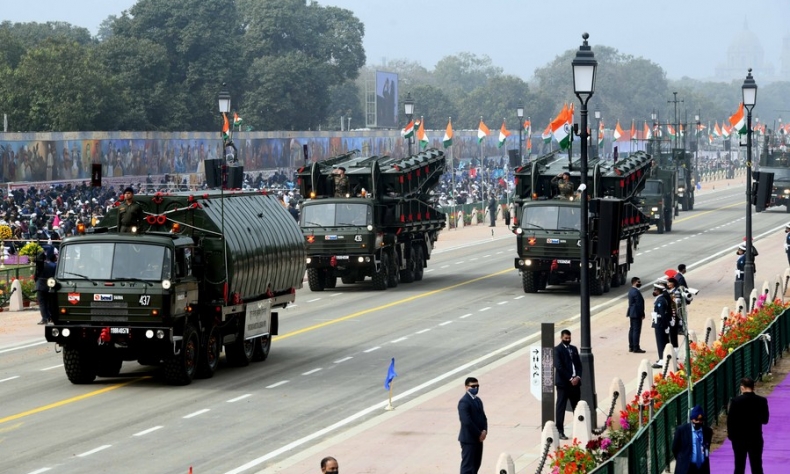India’s Strategic Position

In the Russia-Ukraine conflict, not yielding to American demands is the choice of both China and India.
In the last two days of March, New Delhi almost simultaneously hosted Russian Foreign Minister Sergey Lavrov, British Foreign Secretary Elizabeth Truss and U.S. Deputy National Security Advisor Daleep Singh. Earlier, on March 25, Chinese State Councilor and Foreign Minister Wang Yi had also visited New Delhi. In light of the current complex state of the world, India’s position has become increasingly critical.
Since the outbreak of the Russia-Ukraine conflict, India has adopted a neutral stance, abstained from almost all relevant votes in the UN, and did not join the U.S.-led sanctions against Russia. Its abstention stirred strong Western dissatisfaction. On March 21, U.S. President Joe Biden publicly stated that only India among the U.S.-Japan-India-Australia “Quad” alliance is “somewhat shaky” in acting against Russia.
This time, both Singh and Truss visited India with the intention of raising pressure on the country. Singh made it clear that the U.S. does not want to see India and Russia settle trade directly in their own currencies, nor does it want India to import Russian energy on a large scale. To top it all off, the U.S. warned that if India and the “emerging powers”—largely alluding to China—were to face conflict, Russia would not take its side.
It seems impossible for the U.S. to impose punishment on India, because this country is the one target it must win over. The U.S. considers India the world’s largest democracy; at the same time, however, it is also a developing country with, sooner or later, the world’s largest population. If New Delhi’s position on international issues is consistent with that of Washington, it will generate a greater demonstration effect in developing countries. Moreover, India plays an important role in Biden’s Indo-Pacific strategy seeking to “constrain China’s naval ambitions.” If pressure becomes excessive, India may seek to strengthen cooperation with Russia and probably will improve its relationship with China. And that is one outcome the U.S won’t want to see.

Compared with American coercion, Russia is showing more favor. Facing unprecedented economic sanctions imposed by the West, Moscow urgently needs the support of its longstanding partner. For India, in the context of the world’s promptly unfolding energy and food crises, maintaining trade ties with Russia makes for the advantageous choice. During his visit, Lavrov and India’s Minister of External Affairs Subrahmanyam Jaishankar confirmed that the rupee-ruble settlement mechanism had been implemented and India would be importing more Russian oil, adding that American pressure would not affect bilateral collaboration.
Russia-India military cooperation, too, is on the intensifying track. This particularly deep connection between both sides has been going strong for nearly half a century. Not too long ago, U.S. Deputy Secretary of State Victoria Nuland said her country and Europe were willing to become India’s defense and security partners and help it eliminate its dependence on Russian defense materials. But compared with this verbal commitment, Russia not only can provide India, currently its largest buyer in the defense field, with advanced weapons, including S-400 missiles, but can also transfer military technology, something urgently needed by the latter in its quest for national defense independence.
In fact, India has already made its choice. The country has long strived to position itself as a major global power and a strong regional force. Don’t forget, its former Prime Minister Jawaharlal Nehru (1889-1964) once took a leading role in the Non-Aligned Movement, a forum of 120 countries not formally aligned with or against any major power bloc. All along, India has implemented “equidistant diplomacy” between the U.S. and Russia. With this understanding, it can remain very close to the U.S. for its own interests; but becoming a vassal country will never be an option.
“China and India are the two largest developing countries and representatives of emerging economies with a combined population of 2.8 billion, and are two main forces in promoting worldwide multipolarization, economic globalization, diversity of civilizations, and democratization of international relations,” Wang said in his talks with Jaishankar. In the Russia-Ukraine conflict, not yielding to American demands is the choice of both China and India.
 Facebook
Facebook
 Twitter
Twitter
 Linkedin
Linkedin
 Google +
Google +










